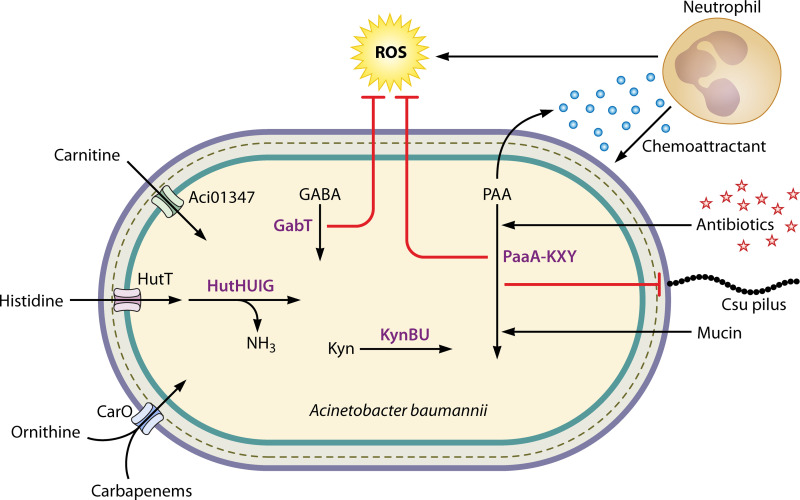FIG 4.
Catabolism of organic acids and amine compounds promotes A. baumannii virulence. A. baumannii encodes carnitine import protein Aci01347, which is required for growth on carnitine as the sole carbon and energy source. Histidine catabolism is encoded by pathogenic Acinetobacter spp., and HutH is required for utilization of histidine as a carbon and nitrogen source. Mutants lacking CarO are resistant to carbapenems and lose ornithine transport activity, suggesting CarO transports carbapenems and ornithine into the cell. Pathogenic Acinetobacter spp. can catabolize kynurenine (Kyn) with KynB and KynU. The γ-aminobutyric acid (GABA) aminotransferase GabT and the phenylacetic acid (PAA) pathway both contribute to resistance to reactive oxygen species (ROS). PAA catabolism also contributes to immune evasion, as mutants in the pathway excrete PAA, which serves as a neutrophil chemoattractant. Antibiotics promote expression of PAA pathway genes and inhibit chaperone-usher (Csu) pilus expression in a PAA-dependent mechanism. Host mucin glycoproteins can serve as the sole carbon and energy source for A. baumannii and promote paa gene expression.

